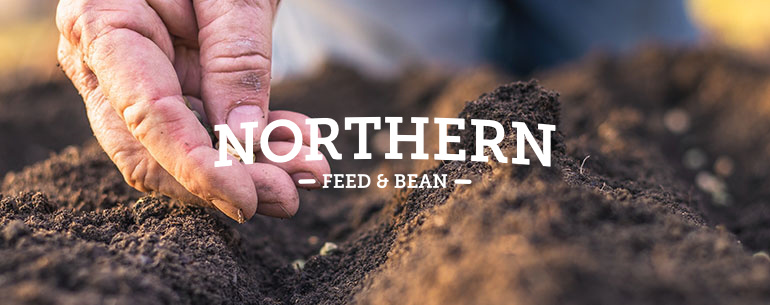How to Grow Beans in the High Plains
July 24, 2023
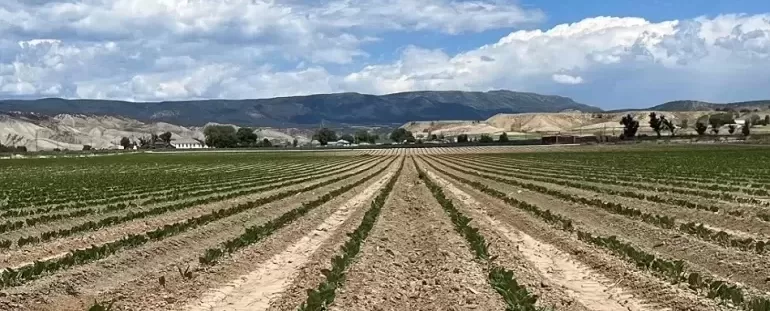
The High Plains are known for producing beans of exceptional quality, with bright, vibrant colors and delicious flavor. In fact, the beans we grow here in Colorado, Nebraska, and Wyoming are said to have terroir, due to factors like our climate of warm, sunny days and cool nights, which contributes to the complex, rich flavor of our beans. A common question we get is about how to grow beans here in the High Plains. So, in this blog, we want to give you a behind-the-scenes peak into what it looks like to grow beans in this region.
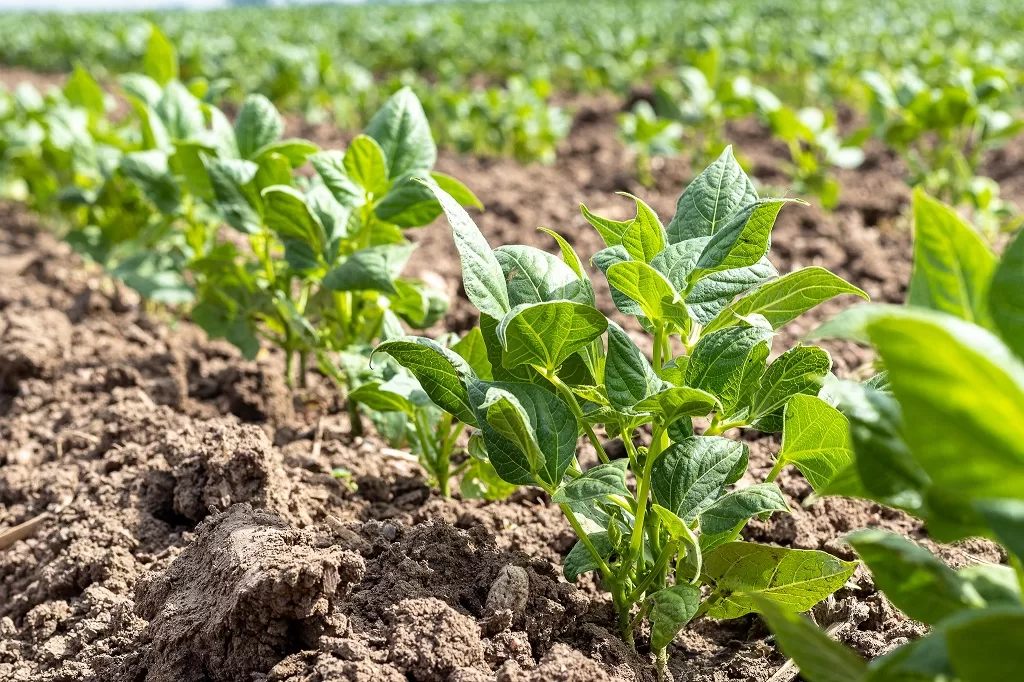
Bean plants from early in the 2023 growing season
Ensuring Farmers Have Access to the Best Information on How to Grow Beans
Northern Feed & Bean was founded in 1952, meaning we have over 70 years in the bean business. We owe our success to our loyal customers and the group of wonderful farmers with whom we work closely to make sure that we bring you the freshest, most delicious beans that have been grown with care.
Because our beans are fresh, they have bright colors and cook more evenly and quickly than older beans you may get in the grocery store.
Our farmers are experts in what they do, but there is constantly new information coming out about best management practices, new varieties of beans, and more. We partner with Colorado State University’s agricultural researchers and other organizations to make sure we are always on the forefront of research and growing practices. That is why Northern Feed & Bean views the role of our Grower Relations team members as so important, because they are in constant contact with our farmers, ensuring they have access to the best, most current information. We recognize that every field is different, with unique factors to consider and associated challenges and solutions, and we pride ourselves on the grower services we offer and the personal, longstanding connections with have with our farmers.
We regularly film videos during the growing season, sharing expertise from our team. Let’s dive into the last couple of growing seasons to highlight how we grow High Plains beans.
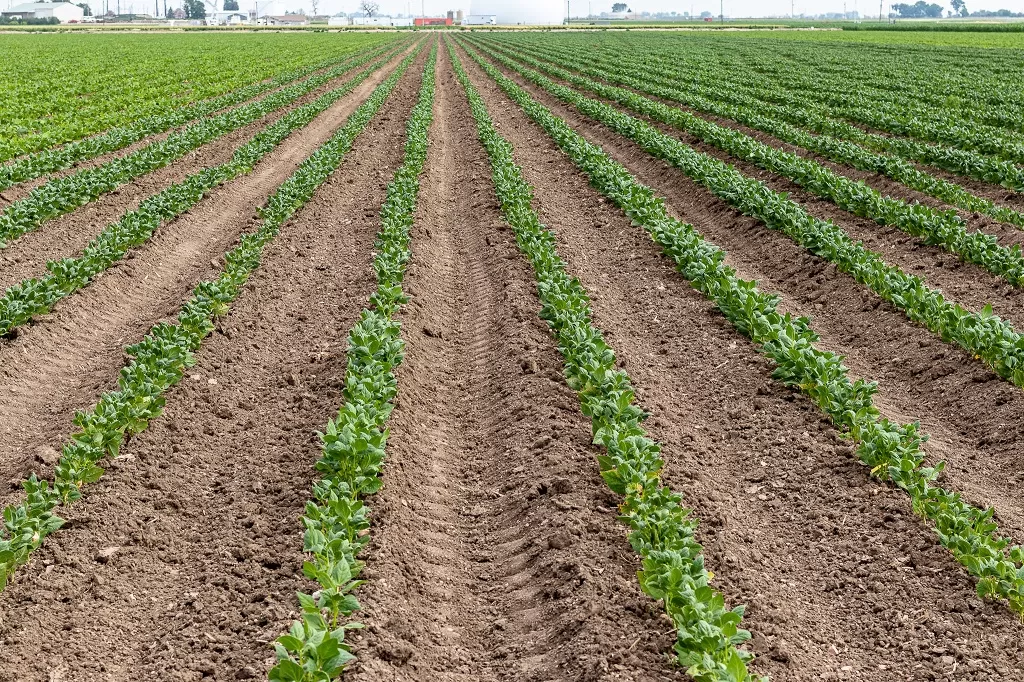
A bean field in northern Colorado with both Mayocoba and orca beans
Growing Beans in the High Plains
They say a picture is worth a thousand words, so we want to share photos and videos with you so that you can see for yourself what the process of growing dry beans in the High Plains looks like.
Planting Beans
Planting generally occurs between late May and early June, although – as is always the case with farming – it depends on the weather. It is important to wait until the ground warms up some before planting the beans.
Watch this video to see an interview with one of our growers from the 2022 growing season.
In the interview, Loren shares a few main points:
- He explains how the planter he uses works, and that each hopper holds about one and a half bushels of bean seed (1 bushel is 60 pounds). He plants about 90,000 bean seeds per acre. That is a lot of beans!
- Planting depth depends on soil moisture – which is impacted by things like rainfall and how you irrigate – and he planted about 3 inches deep. Loren shares that if you will irrigate right away, you can plant the beans a bit shallower, and the beans will germinate more quickly.
- Some fertilizer helps produce healthy plants and more beans, but beans require less fertilizer and water than other crops. This is very important, because he says you can use less water on the beans, helping to ensure that other crops get enough water. As we have written about before, helping conserve our water resources and not needing as much fertilizer are a couple of the many environmental benefits of beans.
The Bean Growing Season
Beans mature quickly, in about 90 days. It is amazing that in that short of a time, they can produce such incredible nutrition, packing about 7 grams of both protein and fiber into just half a cup of cooked beans, not to mention the iron, potassium, and B vitamins like folate. Hunter Payseur, one of our Grower Relations Representatives, took these photos less than 2 weeks apart – look at the dramatic difference!
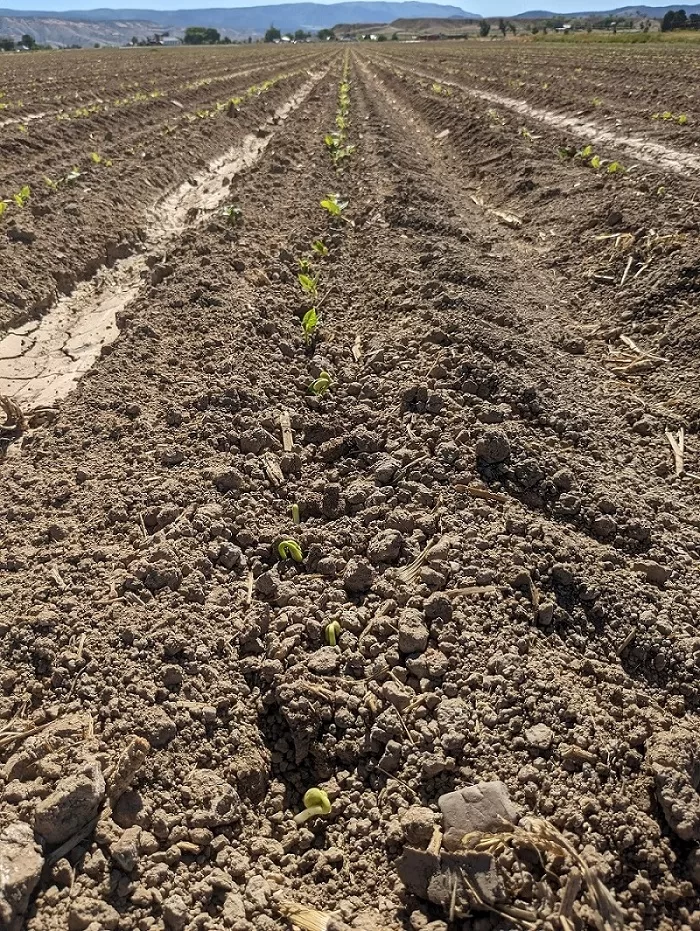
A Mayocoba bean field on June 28, 2023
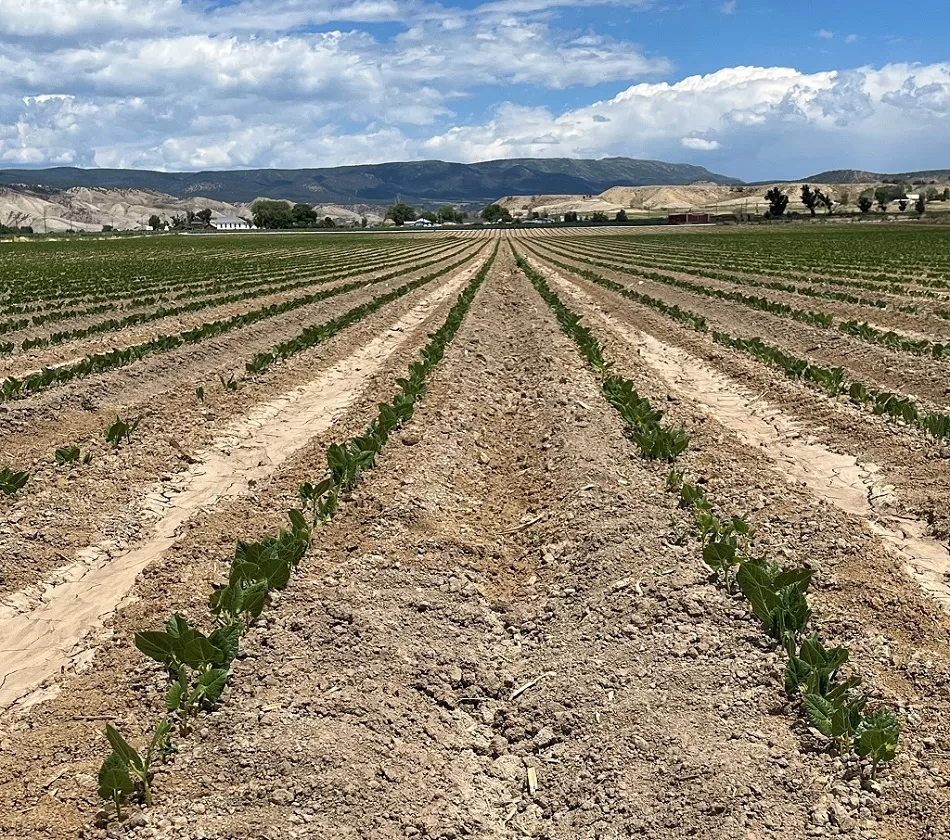
The same Mayocoba bean field on July 10, 2023
Dean Larson is the lead for our Grower Relations team, and he has been with us for many years. In this interview, Dean shares about the start of the 2023 growing season.
In the video, Dean shares a bit about how the weather during the early part of the season impacts how the beans grow. The early part of the season was cool, and very cool weather can result in beans growing more slowly. As the weather warmed, the beans started to grow more quickly. Dean also talks about how cultivating the soil can help the plants breathe better and get rid of weeds. Moreover, Dean shares about how different bean plants can have different appearances. For example, Mayocoba bean plants tend to be a more lime green, whereas orca bean plants are a darker green.
When growing beans, there are several stages. They go through a vegetative stage first, like our team shares in this video update from a Mayocoba field. After the vegetative stage, they begin to flower, entering the reproductive stage. Flowering tends to happen at about 45 days after planting, weather dependent. In the video, we also talk about how keeping the bean plants healthy and happy requires water, but much less water than corn, for example.
After flowering, the plant begins to produce pods, as you can see in this video from the field. As the plants mature and get closer to harvest, the pods start to dry down, and the moisture level of the beans inside the pods drops, which is what we want to happen before harvest. You can see the transition that occurs in bean pods and the beans inside in this video update.
Harvesting Beans
Bean harvest happens in early fall, about 90 days after planting – although, again, it of course depends on the weather. Some beans are direct harvested, but many of the farmers we work with still cut the bean plants and allow them to dry in windrows before combining them. As you can hear in the video about cutting the beans, farmers often wake up around 2 or 3 am so that they can cut the bean plants while there is still dew. If it is too dry, the bean pods can shatter. Waking up that early to make sure they can harvest the best quality beans is true dedication!
In this harvest video below, you can see the Mayocoba beans have dried down when they are combined and are a beautiful, vibrant yellow color.
Learn More About How to Grow Beans in the High Plains
Want to see more about how our farmers grow beans here in the High Plains? Be sure to follow us on
YouTube, where we share regular video updates during the growing season. For more frequent photo
updates, check out our Instagram and Facebook account and follow along.


